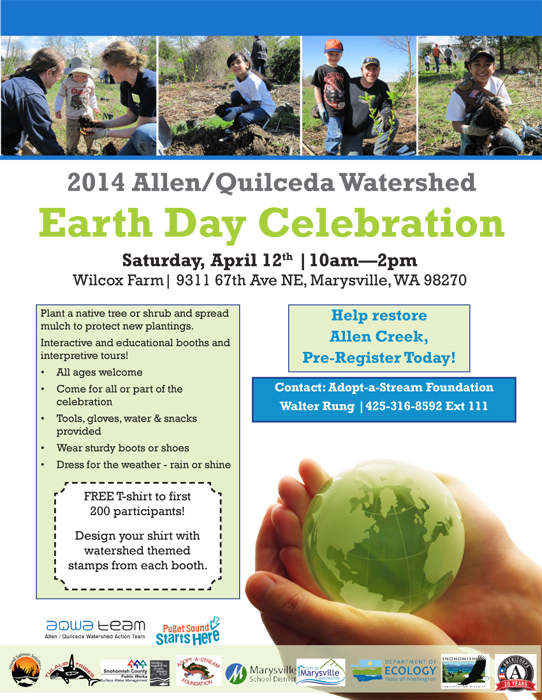Category: Arts & Entertainment
Tribal college poetry slam
By Monica Brown, Tulalip News
The tribal college poetry slam event in March of 2014, features a large collection of talented Native American poets speaking on different subjects from family to government. The video lasts and hour and a half with round two starting at the 58:00 mark. Among the poets is Jennifer Cordova-James of Northwest Indian College.
The 2014 tribal college poetry slam is a Tribal College Journal (TJC) and American Indian Higher Education Consortium (AIHEC) event.
The AIHEC founded in 1972, represents 37 Tribal colleges and their mission is “to support the work of the tribal colleges and universities and the national movement for tribal self-determination.”
Supported by the AIHEC, is the TJC’s and states they are a “culture-based publication addresses subjects important to the future of American Indian and Alaska Native communities utilizing both journalistic and scholarly articles and has become a forum for college staff, faculty, administrators, and students to discuss their needs, successes, and evolving missions.”
Peter Matthiessen (1927-2014): Leonard Peltier and In the Spirit of Crazy Horse
by Colin Penter
April 7th, 2014 The Stringer Independent News
‘Whatever the nature and degree of his participation at Oglala, the ruthless persecution of Leonard Peltier had less to do with his own actions than with underlying issues of history, racism, and economics, in particular Indian sovereignty claims and growing opposition to massive energy development on treaty lands and dwindling reservations.’
Peter Matthiessen
Author, writer, environmentalist and political activist Peter Matthiessen has died, aged 86, after a short illness. Pieces written is his memory are here, here, here, here and here.
Matthiessen is best known for his fiction work, his writings on the natural world and his writing and activism on environmental causes.
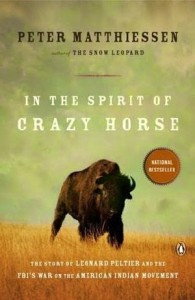 However, it is his non-fiction books that I value the most. These include In the Spirit of Crazy Horse, which chronicles the story of Native Indian political activist Leonard Peltier and the FBI and US Government’s war on the American Indian Movement and his book about the legendary farm worker, union organizer and activist Ceser Chavez.
However, it is his non-fiction books that I value the most. These include In the Spirit of Crazy Horse, which chronicles the story of Native Indian political activist Leonard Peltier and the FBI and US Government’s war on the American Indian Movement and his book about the legendary farm worker, union organizer and activist Ceser Chavez.
In the Spirit of Crazy Horse is one of the finest examples of a book that exposed historical and political injustice and gave force to a political campaign that continues to this day.
In In the Spirit of Crazy Horse, Matthiessen documents the massive number of crimes committed against Native American people and the genocidal nature of the US authorities in their destruction of Native cultures and people. He documents a long string of historical injustices, ranging from mass slaughter to the takeover and reapportionment of sacred or Native lands, including the forced appropriation of Indian lands for mining use.
The key figure in Matthiessen’s book is Leonard Peltier, who has spent 37 years in American prisons for the alleged murder of 2 FBI agents on the the Pine Ridge Indian Reserve in South Dakota in 1975.
Peltier, an Ojibwa-Lakota from Turtle Mountain, North Dakota, was one of the three young Indians involved in a shoot-out with the FBI at Oglala on South Dakota’s Pine Ridge Reservation in June 1975, which resulted in the death of 3 men, including 2 FBI agents and an Indian. Pelteir and 3 others were later charged with the murder of the two FBI agents.
Peltier and two of the young Indian men indicted were members of the American Indian Movement (AIM) a group fiercely opposed to the sale of Reservation land and mining rights to non-Indian interests.
Mathiessen shows how the fire fight was the result of a planned military assault on the Reservation by FBI agents and local Police, working in conjunction with an Indian para-military group (The GOONS), who were linked to Indian tribal figures keen to sell Indian land to white corporate interests wanting to exploit its mineral wealth.
Those same Indian leaders, with the support of Federal authorities, had armed the GOONS (Guardians of the Oglala Nation), who had been terrorizing Indians on the reservation who opposed the sell off. In the 2 years leading up to the shoot out, the GOONS reign of terror had resulted in between 200-300 deaths.
Matthiessen’s book documents how Peltier’s conviction and subsequent life imprisonment were based on Government fraud and misconduct and highly disputed evidence.
Matthiessen’s book was so controversial its publication was delayed for decades due to legal challenges by the US authorities and the FBI, which cost Matthiessen and his publisher $2 million in legal fees.
In 1969 Matthiessen also wrote a book length profile of Ceser Chavez the legendary union organizer for farm workers in the US. The book was titled Escape if You Can: Cesar Chavez and the New American Revolution.
Matthiesson continued to write about Chavez, quoting him in this profile article:
When we are really honest with ourselves, we must admit that our lives are all that really belongs to us. So it is how we use our lives that determines what kind of men we are. It is my deepest belief that only by giving our lives do we find life. I am convinced that the truest act of courage, the strongest act of manliness, is to sacrifice ourselves for others in a totally non-violent struggle for justice. To be a man is to suffer for others. God help us be men.”
2014 Muckleshoot Veterans Pow Wow
‘It becomes new’: Port Gamble S’Klallam skatepark is a work of art
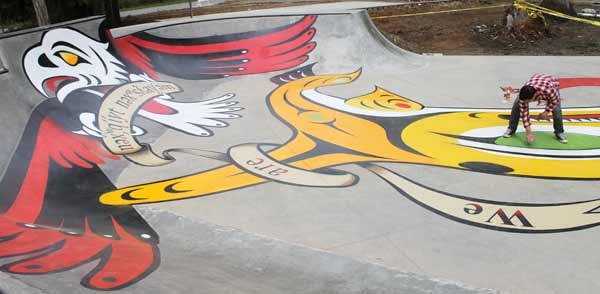
By Kipp Roberston, North Kitsap Herald
Editor’s note: This version expands a comment in the 20th paragraph to clarify how the skatepark and the art will be a mechanism for sharing S’Klallam culture.
LITTLE BOSTON — It was almost midday at the Port Gamble S’Klallam skatepark, and Louie Gong and Josh Wisniewski were preparing to put some final touches on the art sprayed onto the cement.
The two were discussing the collaboration that resulted in a skatepark that was more than a place for people to skateboard. Then, the sound of wings overhead as an eagle flew above, almost directly over a Coast Salish painting of an eagle.
Maybe the eagle was a sign. “Or not, maybe. Maybe [it] just is,” said Wisniewski, the Tribe’s archeologist and cultural anthropologist.
The Tribe will celebrate the official opening of the skatepark in April. It’s a project that started in 2012, after the project was chosen as the best skatepark project — from hundreds of submissions — via social media through the Sheckler Foundation.
The foundation, founded by professional skateboarder Ryan Sheckler, assists projects that benefit and enrich the lives of children and injured athletes. It was the foundation’s first project.
The Tribe provided the site for the project, near the Teekalet neighborhood. The site was selected by the S’Klallams Working and Giving (SWAG) youth group.
After the site was selected, Angelique Zaki of the foundation visited Little Boston to help plan the skatepark’s development. She connected the Tribe’s planning department with Grindline Skateparks, a skatepark developer in Seattle which has built more than 120 parks — from Okinawa, Japan, to Orcas Island to Oxford, Miss. Grindline donated its design services, Zaki said.
Other project partners: Map Ltd., construction and civil engineers of Silverdale, surveying services; Krazan & Associates of Poulsbo, soils testing; and Coho Concrete of Kingston, concrete laying.
Gong said he received a grant through the Evergreen Longhouse to help with costs, mainly travel between his home and the Port Gamble S’Klallam reservation.
The skatepark has become more than just another place to skate. It reflects the Tribe’s youth and culture.
“The artwork here in the park is really meant to reflect the people and interest of who the park belongs to,” Gong said.
Gong, an artist of Nooksack and Chinese ancestry, was one of the driving forces behind the skatepark art. Gong produces Coast Salish art in various forms — among them shoes, skateboard decks and home decor — for his company, Eighth Generation. He was contacted by Wisniewski and invited to participate.
Gong worked with SWAG on what art they would like to see at the park. He took that info back to his office in Seattle and made mockups of the designs and potential color templates on his computer.
Gong and S’Klallam youth then used high-end spray paint, with stencils and masking tape at times, to piece together the art.
The art project was mostly completed within March. The result is a colorful and cultural skating experience.
Breaking barriers
When a non-tribal member steps onto the skatepark they will see an eagle, orca, canoe, and two phrases written in S’Klallam: “It becomes new,” and “We are Noo-Kayet S’Klallam.” “It becomes new” is the closest language equivalent to “Be the Change,” the Sheckler Foundation’s campaign.
It’s almost like a stamp. “You walk into that park, and the first thing you see is ‘Port Gamble S’Klallam,’ ” Wisniewski said.
The artwork was a way to reflect the youth — not only as S’Klallam, but as the people who brought the skatepark into the community, he said. And that’s not being done in an exclusionary way, but as a way to show respect for the youths’ hard work.
“People have perceptions of Native people and communities,” Wisniewski said. “This park is something that kids who are Tribal members can invite their off-reservation friends to come visit. In doing so and sharing the park and the art, they will be able to share their community, culture and language. That is how the park and skateboarding will break down barriers.”
Already a lot of interest in park
The skatepark is technically open to the S’Klallam community and guests. But that doesn’t mean there isn’t growing interest in the park from outside of the community.
As boxes of spray paint cans and stencils were being pulled out of a supply shed so a few more artistic features could be added to the park, two men pulled into the adjacent parking lot. They wanted to know when the park would be open. Because painting was going on, they were turned away.
Apparently, interested skaters have become common at the park, which hasn’t officially opened.
Wisniewski said skateboarding is growing in popularity within Native American communities. A “cultural event,” he called it.
The skatepark will also give S’Klallam youth another recreational opportunity. Other than the skatepark, there is a playground, gym and basketball court. There is not a lot of recreation for older kids in Little Boston, Wisniewski said.
“If you don’t have a place for kids to do stuff, they won’t do it,” he said.
When finished, the S’Klallam skatepark will be one of four skateparks in the area. Other skateparks are located in Kingston, at Raab Park in Poulsbo, and at Clear Creek Park in Silverdale.
Oso Landslide Benefit Featuring Country Music Star Chance McKinney
Neighbors Helping Neighbors Concert at Tulalip Resort Casino
WHO: Tulalip Resort Casino, country music star Chance McKinney, with Ron Stubbs as the opening act
WHAT:
- A live concert to raise Oso Landslide Relief funds, with a goal of a sell-out event
- $20 entry charge at the door, with 100% of the admission proceeds benefiting the Oso community
- Each attendee will receive a drawing ticket to win an autographed guitar by Chance McKinney
- The total donation will become part of an account set up by Union Bank of Edmonds and Cascade Valley Hospital. Proceeds will be used to assist the victims and their families. Additional donations may be made at the event
WHEN: Friday, April 4th beginning at 6:00 pm
WHERE: Canoes Cabaret
Tulalip Resort Casino
10200 Quil Ceda Boulevard
Tulalip, Washington 98271
WHY: A large landslide destroying a sizable part of the Oso community, covering nearly a square mile with mud and debris, as well as claiming at least 27 lives“It’s not often we’re called upon to help neighbors in such dire need, but when the opportunity arises, nobody can say the Pacific Northwest isn’t up for the challenge!” says Chance McKinney.
Tulalip COO and President Ken Kettler concurs, “Our goal is to deliver funds directly back to the Oso community, where the need is epic and every dollar helps chip away at the sheer magnitude.”
Tulalip Hibulb Cultural Center Upcoming Events
Canadian Inuit post ‘sealfies’ in protest over Ellen DeGeneres’ Oscar-night selfie
Inuit reject Oscar host’s anti seal-hunting photo stunt and say practice is humane and sustainable.
Ben Childs; theguardian.com, Friday 28 March 2014 12.34 EDT
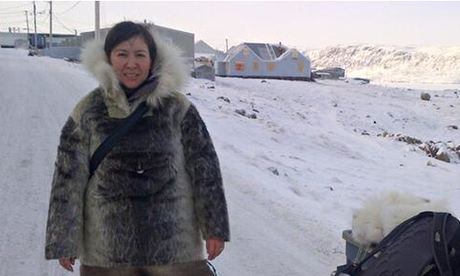
Canadian Inuit have embarked on a unique form of protest against the decision by host Ellen DeGeneres to highlight an anti seal-hunting charity on Oscars night. DeGeneres’ Hollywood megastar “selfie” became the most retweeted snap of all time earlier this month, in the process raising $1.5m for the Humane Society of the United States, which campaigns against the seal hunt.

Now members of Canada’s indigenous population have hit back with their own version, the “sealfie”.
Inuit have begun to post pictures of themselves dressed in sealskin clothing, Canoe.ca reported. The move aims to highlight the cultural and financial benefits of a practice they see as a sustainable, ethical choice.
“The meat feeds families, which is important to an area where many households have identified that they face issues of food insecurity,” said Sandi Vincent, who posted her own “sealfie” on Thursday. “In Inuit culture, it is believed seals and other animals have souls and offer themselves to you. Humanely and with gratitude we accepted this gift,” she said, recalling her first seal hunt at age 15. “My uncle placed some snow in the seal’s mouth when it was dead, so its soul would not be thirsty. If there is one word to describe seal-hunting, I would suggest ‘respectful’.”
DeGeneres’ website says Canadian seal-hunting hunt is “one of the most atrocious and inhumane acts against animals allowed by any government”.
Inuit Alethea Arnaquq-Baril tweeted: “I am an Inuit seal-meat eater, and my fur is ethical.” Campaign supporter Taha Tabish wrote: “Hey, @TheEllenShow, I support the sustainable harvesting of seal.”
The $1.5m (£900,000) donation came about after Korean firm Samsung promised to donate $1 to a charity of the Oscars host’s choice each time her celebrity-loaded selfie was retweeted.
Culture night, more than crafts
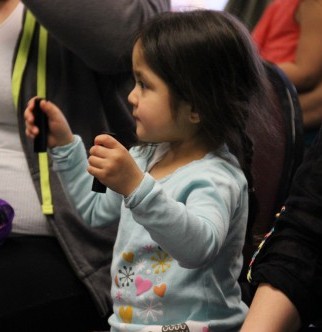
By Andrew Gobin, Tulalip News
Tulalip – Tulalip Youth Services hosts a culture night every Monday at 5:30 p.m. The evening often features lessons on traditional arts and crafts and always includes time for singing and dancing. Some nights, like March 24th, the cultural specialists, Tenika Fryberg and Taylor Henry, prepare an evening of culture and community through games and other presentation. On the 24th, they presented the traditional slehal game.
Slehal, translated as bone game or also referred to as stick game, is a traditional game that is played throughout the Salishan area, from Northern Oregon up to Haida Gwaii and as far east as Browning Montana. The goal is to win all of the stick by finding the unmarked bone, much like the children’s game ‘pick a hand.’ The number of sticks varies between seven and eleven, but the goal remains the same.
Bone Games mean many things for Salish peoples. There are origin stories about men playing against the animals to determine who will rule the world. This embodies two specific aspects of slehal, gambling and dispute settlement. Historically, slehal was a means to settle disputes. Whoever won the game, won the argument. Traditionally, slehal was a gamble, and still is today with many tournaments for prize money up to $10,000 cash.
Culture night is a chance to enjoy these aspects of our culture, coming together as a community to teach all people about our traditions. It is a place to learn the songs and the dances, and, like this week, the communal traditions.
Culture Night is held every Monday in the portable across from the old tribal center, now the youth center, at 6700 Totem Beach Rd. For more information contact Taylor Henry at (360) 716-4916.
Andrew Gobin is a reporter with the See-Yaht-Sub, a publication of the Tulalip Tribes Communications Department.
Email: agobin@tulaliptribes-nsn.gov
Phone: (360) 716.4188
It should be a Native American actress, not Rooney Mara, playing Tiger Lily in ‘Peter Pan’
21 March 2014 David Lister The Independent
There’s trouble in Neverland. Warner Brothers have cast the very fine actress Rooney Mara (she of The Girl with the Dragon Tattoo) as Tiger Lily in a new Peter Pan reboot. In this film, by the way, Peter Pan will fight, not against Captain Hook, but Blackbeard, which seems to me pretty bizarre. But leave that to one side. It is the casting of Mara that has caused consternation. Hundreds of people have taken to Twitter to complain about Hollywood’s continued “whitewashing” of characters, and failure to cast actors from ethnic minorities. One said: “Come on. You couldn’t find a Native American actress to play Tiger Lily?”
The complainers are right. This is a rare moment when there is a clear chance to cast a Native American actress, and Hollywood is riding roughshod over sensibilities.
It’s tempting to say we do things rather more sensitively over here. And certainly on the stage, much has been achieved in the long journey towards colour-blind casting. But let’s not get too self-congratulatory. Delivering the annual Bafta television lecture in London this week, Lenny Henry called for new legislation to reverse the “appalling” percentage of black and Asian people in the creative industries.
The actor and comedian said the number of black, Asian and minority ethnic (Bame) people working in the UK television industry had fallen by 30.9 per cent between 2006 and 2012. They now make up just 5.4 per cent of the broadcasting workforce. His proposal is for ring-fencing money for Bame shows. To qualify for the money, 50 per cent of production staff and of on-screen talent must be Bame.
Henry went on to make the very good point that in BBC1’s Luther, the detective played by Idris Elba “has no black friends…you never see Luther with black people, what’s going on?”
He makes a more questionable point when he mentions ITV’s Broadchurch and says that you “rarely see a black face” in high-end British dramas and comedies. Broadchurch was set in a Dorset seaside resort, so the casting was probably pretty realistic.
But the central point is correct. Strides that have been made towards colour-blind casting, or at the very least positive discrimination on stage and screen, are faltering. If the BBC can decree, with justification, that there must always be a woman on a comedy panel-show, then I see no reason why it can’t make decrees about percentages of black and ethnic minority people being employed in broadcasting, both on- and off-screen. It need not be the exact percentage that Lenny Henry suggests, but positive, visible action is needed. As for the new Tiger Lily, the solution is much more straightforward. Rooney Mara should withdraw.


